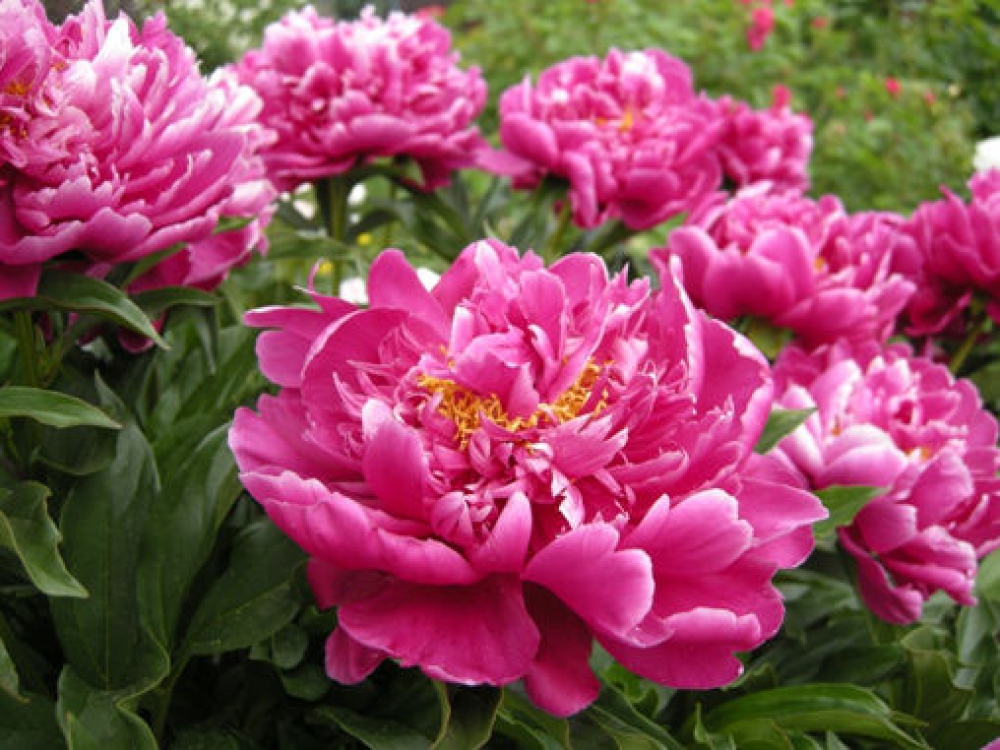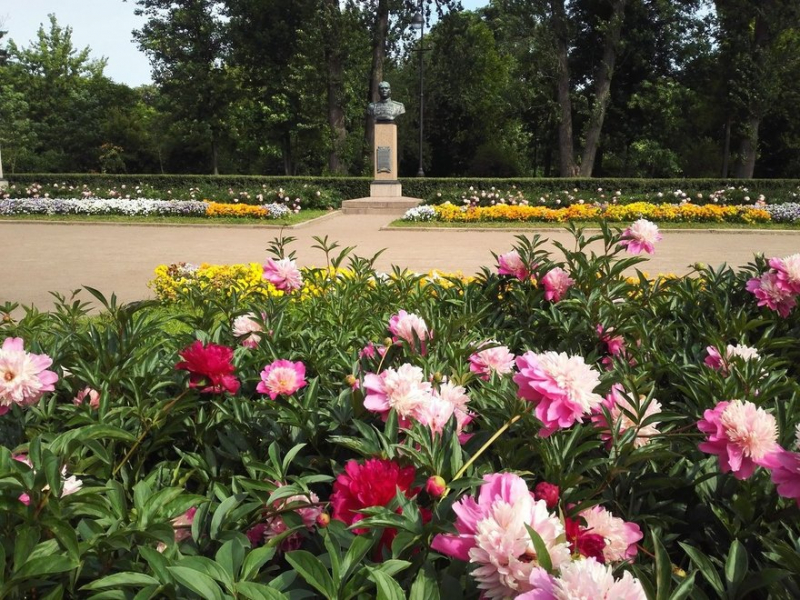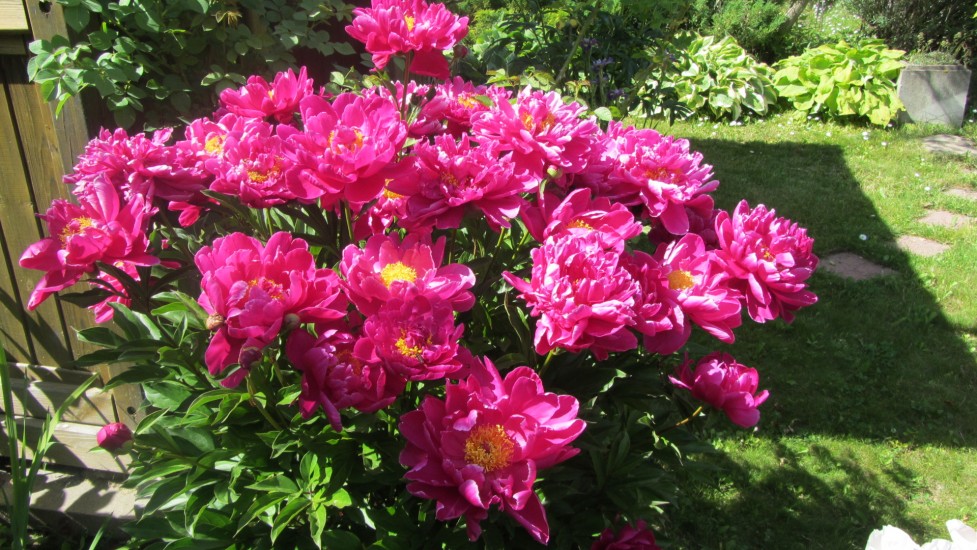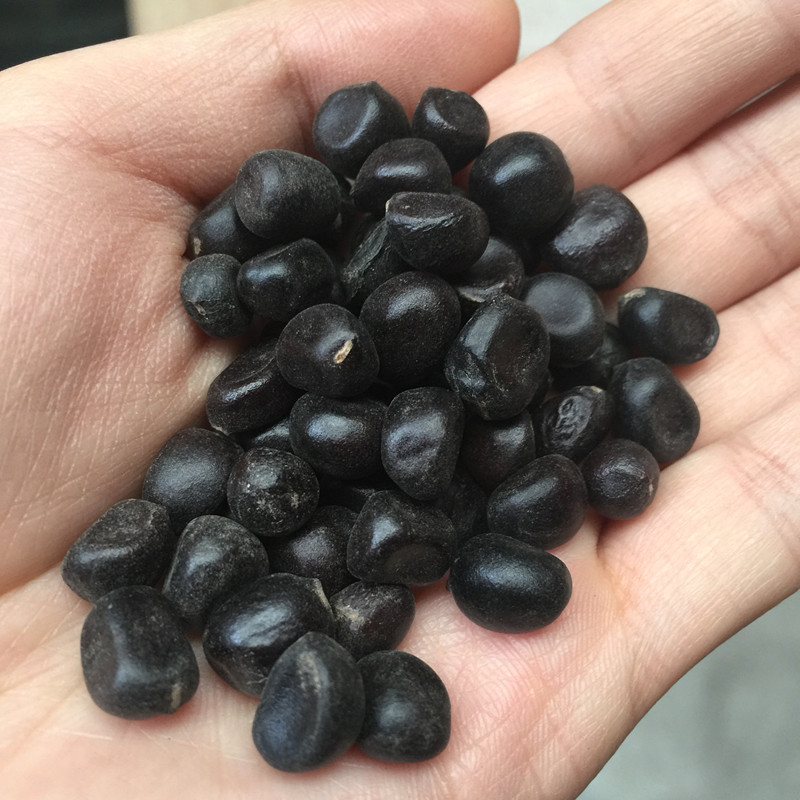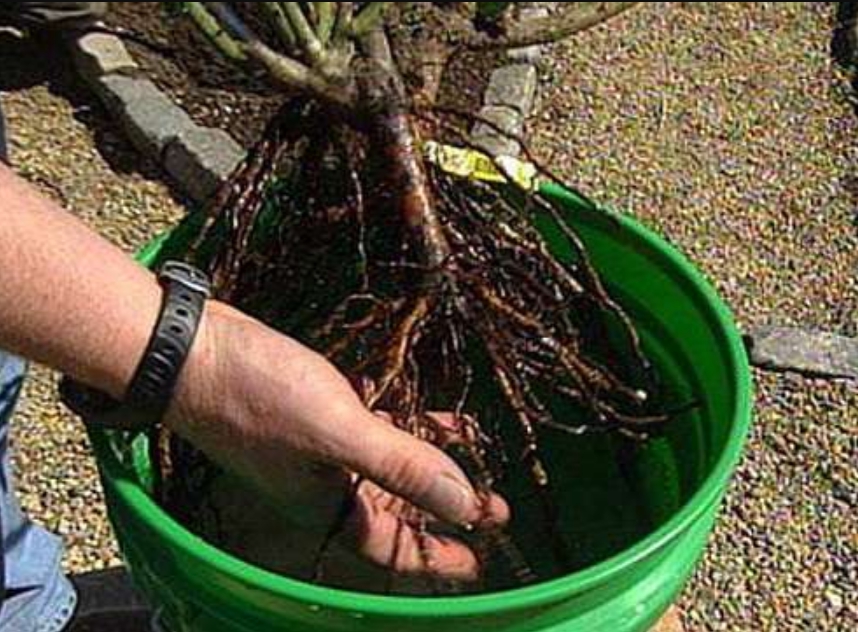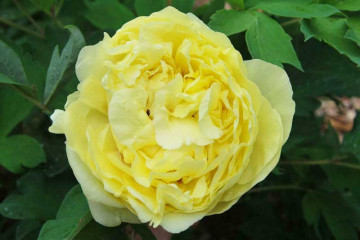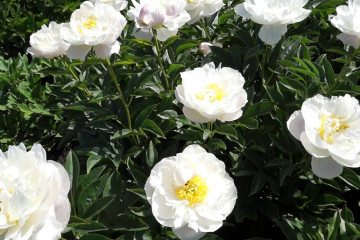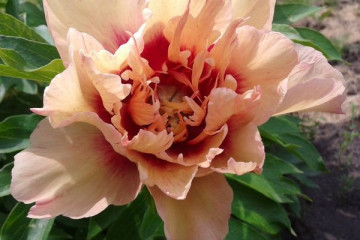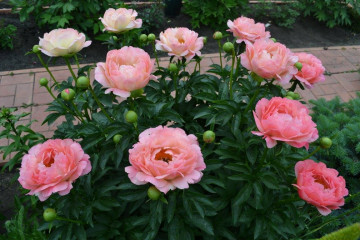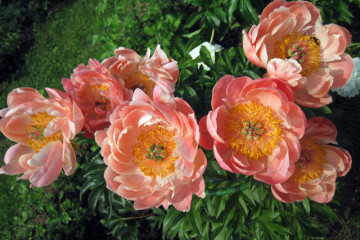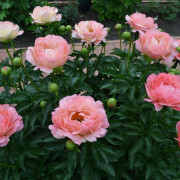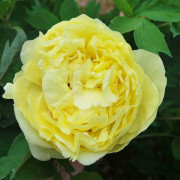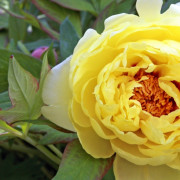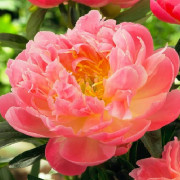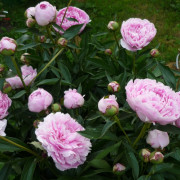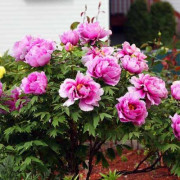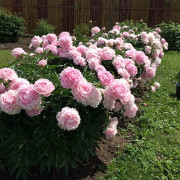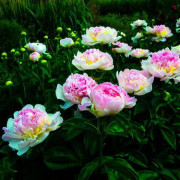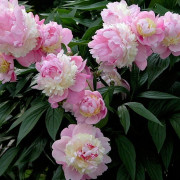Peony Karl Rosenfeld (Paeonia Karl Rosenfield) - planting and caring for a flower
Content:
Peony is the king of the garden. It has a large and colorful bud with a delicate and pleasant scent. Peony Karl Rosenfeld is popular for its lush flowering and high frost resistance.
Peony Karl Rosenfeld - what is this variety, history of creation
Appeared in the south of China. They decorate the national emblem and use it as a design on fabrics. In Latin, peony is spelled paeonia, and Karl Rosenfield is pronounced by most people as "Rosenfield" rather than "Rosenfeld".
Brief description, characteristic
The flower grows in a strong, spreading bush, up to 100 cm high. The shoots are thick, strong with openwork and smooth olive leaves. The bud is lush, hot pink, and a ruby hue appears by the fall season. Types of culture: herbaceous and lacto-flowered.
Advantages and disadvantages of the variety
Like any plant, the Karl lactiflora Rosenfield peony has its pros and cons. Benefits:
- frost resistance;
- strong stems and root system;
- will grow in any soil;
- does not cause any particular difficulties when planting and leaving.
The disadvantage is that it does not grow in the Far North.
Use in landscape design
Peony lacto-flowered (lactiflora) and herbaceous Karl Rosenfeld has a decorative appearance. It is used to decorate flower beds, front gardens, squares and park areas. It grows well and combines with other flowers, but hybrid tea roses are most suitable.
Growing a flower, how to plant it in open ground
Knowledge of the basic rules of planting and growing will help even a beginner to cope with the task.
Planting by root cuttings
In this way, it will bloom in 2 or 3 years. Cuttings from 3-4 year old plants are more suitable. The main condition is a flowering plant with strong roots. A part of the root (at least 10-15 cm) is cut off from the main bush and the branch, on which at least 2-5 buds remain, is renewed depending on the age of the plant.
What time is the boarding
It is recommended to plant seedlings in late August or early September.
Location selection
It is worthwhile to take a responsible approach to the choice of the site:
- Karl loves a lot of light. It is not recommended to plant peonies next to high fences, trees or other obstructions that block sunlight.
- The priority is clay, sandy loam and loamy soil. Flowers will grow faster on sandstone, but will not match the description.
- Drafts and strong winds are not allowed. Recommended to be placed near small bushes. They will protect against blowing.
- It is not recommended to plant bushes in the lowlands, where water will drain, and on the plain, where it will stagnate.
How to prepare the soil and flower for planting
On the seedlings, excess buds are cut off and the root is shortened to 15 cm.Cuttings are disinfected in potassium permanganate, and then sprinkled with crushed coal or burned with brilliant green.
Soil preparation:
- Individual pits 75 × 75 cm are dug at a distance of 60-100 cm.
- The soil is loosened to a depth of 30 cm, after which it is fertilized with a mixture of peat, superphosphate, ash, bone meal, humus and compost.
- It is well watered and left alone for at least a month before planting.
Planting procedure step by step
In order for the flowers to take root and bloom, it is important to follow the step-by-step instructions:
- Loosen the soil in the pit and build a 50 × 50 hole 60 cm deep.
- Pour humus, 200 g of superphosphate and ash each. Stir the mixture.
- Fill 50% of the hole with turf soil.
- Place the seedling in the center so that the buds are at ground level. After the soil has shrunk, they will deepen to 2-3 cm.
- Cover with earth and water.
Seed planting
The herbaceous peony can be grown from seed. The method is more suitable for breeders and has several disadvantages:
- flowering begins 5 years after planting;
- requires careful selection and preparation of seeds for planting;
- the grown peony may not correspond to the description of the variety;
- some of the seeds will die.
Not all gardeners are prepared for this challenge.
Plant care
Peonies will not take root without timely feeding, watering and other processing.
Watering and feeding
For each bush, a bucket of well or settled water is consumed. During drought, the frequency of watering is 1-2 times every 7 days, in normal weather - once every 1.5-2 weeks. The main thing is not to allow the soil to completely dry out.
Top dressing is carried out immediately after planting, then in the season before flowering.
Mulching and loosening
This will help to retain moisture and feed the shrub. Mulching starts in spring. Best after loosening. Used as mulch:
- sawdust;
- peat;
- humus;
- fallen leaves.
Preventive treatment
Carried out before landing. Saplings are processed with potassium permanganate, the cuts are covered with coal or covered with brilliant green. It is advisable to treat the root zone with Bordeaux liquid. During growth and development, it is worth spraying the bushes with solutions from pests and diseases.
Peony Blossom Karl Rosenfield
Subject to a number of conditions and proper care, the Karl Rosenfield peony begins to bloom in 2-3 years. The flowering period is 2-3 weeks. Description of the blooming bud:
- flowers are simple and semi-double, single;
- diameter of dense inflorescences about 18 cm;
- the color scheme is varied, you can find a bright red bud with a purple tint, white and pink; often come across bright pink with a red tint;
- the edges of the large petals are curved, wavy in shape.
A period of activity and rest
Activity starts around early or mid-April. Lactiflora Karl Rosenfield draws attention before freezing. There is a dormant period from November to March.
Care during and after flowering
Features of the use of fertilizers:
| Month | Period | Fertilizers | |
| 1 | April | First shoots | Nitrogen-containing 70 g per bush |
| 2 | May June | Buds appear | Bucket of poultry manure or mullein solution |
| 3 | July August | End of flowering | Phosphorus-potassium |
| 4 | September | Add 50 g of superphosphate to 10-15 kg of humus | |
| 5 | October | Preparing for rest | It's good to dig the earth. Mix 30 g of phosphate-potassium fertilizer with 15 kg of compost or rotted manure |
What to do if it does not bloom, possible reasons
The culture may not bloom in due time for the following reasons:
- little light;
- a lot of moisture;
- the plant has been exposed to diseases and attacks of pests;
- thin soil or insufficient nutrients.
To remedy the situation, you should find out the reason. If the diagnosis and elimination did not help, the peonies are transplanted.
Peonies after flowering
The end of the flowering period is not a reason to relax. Caring for the bushes should be continued, and the plant itself should be prepared for transplanting, pruning and wintering.
Transfer
It is better to replant in late August or early September. Before the onset of the first frost, the roots will have time to take root and survive the winter.
Pruning
Held a month before winter, around the middle or end of October. Shoots are cut so that hemp is no more than 20 cm above the soil.
Preparing for winter
The stumps of young plants are covered with immature compost or peat until spring. Mature bushes do not insulate for the winter.
Diseases, pests and ways to control them
Ants, ticks, aphids and thrips pose a great danger to the peony. Pests slow down growth, flowering, are carriers of fungus and infections. They are removed with the help of insecticides and other insect repellants. The flower is sick with gray mold, rust and mold. To prevent diseases, it is necessary to spray with solutions of basezol or copper oxychloride. Blossoms that do not respond to treatment are best cut and burned.
Peony Rosenfeld is unpretentious in care, does not cause any particular difficulties during planting. It is used to create bouquets, decorate plots, alleys or parks.
